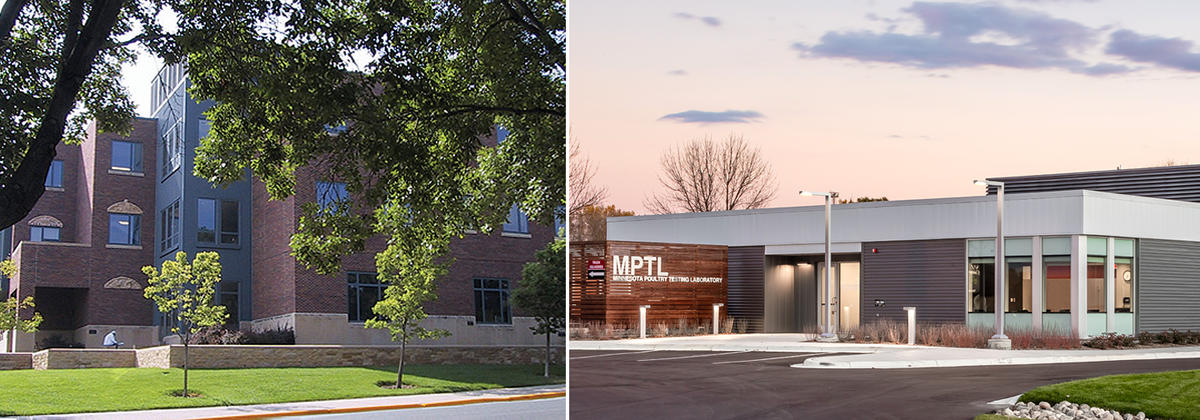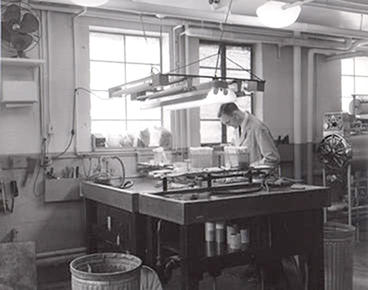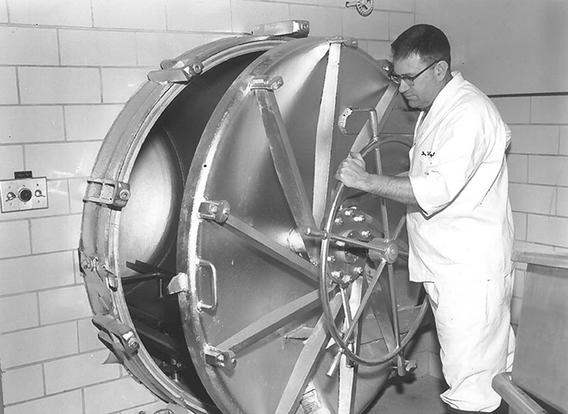
Our mission is to protect and promote animal and human health through early detection and monitoring of animal diseases.
The University of Minnesota Veterinary Diagnostic Laboratory (VDL) is a national leader in providing rapid diagnosis of animal diseases, identifying emerging diseases, developing new diagnostic methods, and training diagnosticians and veterinarians.
The VDL serves the interests of the livestock and poultry industry, animal research scientists and educators, and companion animal owners. We provide strong support to the state as the official laboratory of the Minnesota Board of Animal Health as well as supporting the national animal and human health system.
The laboratory is a part of the University of Minnesota College of Veterinary Medicine and serves as Minnesota’s only full service laboratory for animal health diagnosis.
Accreditation
The VDL is fully accredited by the American Association of Veterinary Laboratory Diagnosticians.
NAHLN Letter
Quality Assurance Letter
Proficiency Tests
Our history
The Veterinary Diagnostic Laboratory (VDL) has been part of the University of Minnesota since 1904, when it opened with a staff of four people and a mission to serve as the state's major diagnostic facility for health and disease in livestock, poultry, and companion animals.

It was also commissioned to be the official laboratory of the Minnesota Board of Animal Health. In that capacity, it provides essential laboratory support for the state's animal disease control and eradication programs and provides laboratory analyses required for local, interstate, and international movement of animals and animal genetic material.
Today, the VDL's primary activity is to provide animal health support to livestock and poultry producers, practicing veterinarians, and other animal health consultants by generating in-depth laboratory investigative information to help determine why a herd, flock, or individual animal is not performing up to its potential.
Our facilities through the years
A new three-story building opened to house the VDL in November 1992. The new building doubled the size of the laboratory, and solved a space deficiency that had become increasingly critical over time. The building culminated eight years of effort by people who dedicated time, energy, and funds to support the planning and construction of the Diagnostic Laboratory.
Beginning in 1998 the VDL initiated an extensive project to upgrade its computer systems to leading edge technology. Currently, case processing and reporting software is being developed to improve the laboratory's communication with its users. Technology in molecular diagnostics is also being upgraded and expanded to meet an increasing demand for these diagnostic services from animal industries. As a result of its data processing and reporting capabilities, the VDL became a funded member of the National Animal Health Laboratory network (NAHLN) of the US Department of Agriculture in 2004.

In January 2005, newly renovated space housing a state-of-the-art molecular diagnostic laboratory and microbiology laboratory was dedicated. The VDL molecular laboratory is now among the most advanced and highest volume laboratories in the United States capable of testing 500-750 samples/day with same day results for many of the tests. In addition, a biohazard waste disposal system (“Tissue Digester” manufactured by WR 2) was installed the same year.
A biosafety level 3 necropsy laboratory addition to the VDL necropsy floor was completed and dedicated in January 2008. The new facility enables VDL faculty and staff to safely work with airborne zoonotic pathogens.